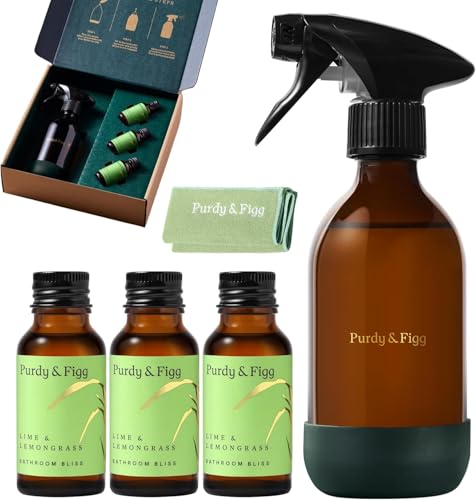

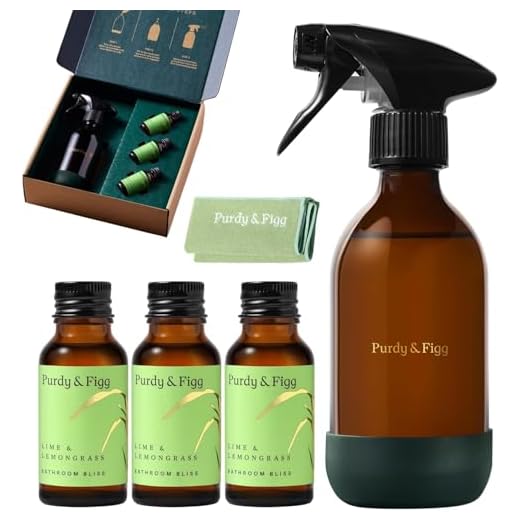


Limescale is a common problem that can occur on glass surfaces, such as shower doors, windows, and glassware. It is a hard, chalky deposit that is formed by the build-up of minerals from hard water. The presence of limescale not only affects the appearance of glass but can also make it difficult to clean and maintain. In this ultimate guide, we will explore some effective methods to remove limescale from glass and restore its shine.
One of the most effective methods to remove limescale from glass is to use a vinegar solution. Vinegar, specifically white vinegar, contains acetic acid which helps to dissolve the minerals in limescale. You can mix equal parts of white vinegar and water in a spray bottle and spray the solution onto the glass surface. Let it sit for a few minutes, then scrub with a sponge or soft cloth. Rinse thoroughly with water and dry with a clean cloth.
If the limescale build-up is particularly stubborn, you can try using a lemon juice and salt paste. The acidity in lemon juice combined with the abrasive properties of salt can help break down and remove the limescale. Simply squeeze the juice of a lemon into a bowl and add a few tablespoons of salt. Mix it into a paste and apply it to the limescale. Let it sit for a few minutes, then scrub and rinse off. Remember to wear gloves when using this method, as lemon juice can irritate the skin.
For heavier limescale deposits, you may need a stronger solution such as a commercial limescale remover. There are many products available on the market specifically designed to tackle limescale. Follow the instructions on the product for best results. Always test the product on a small, inconspicuous area first to ensure it does not damage or etch the glass surface.
In conclusion, limescale can be a stubborn and unsightly problem on glass surfaces. However, with the right methods and products, it can be effectively removed. Whether you choose to use a vinegar solution, a lemon juice and salt paste, or a commercial limescale remover, always remember to follow safety precautions and test the method on a small area first. With these effective methods, you can bring back the shine to your glass surfaces and enjoy a clean and sparkling environment.
Understanding Limescale on Glass
Limescale is a common problem that many people face when it comes to keeping their glass surfaces clean. Understanding what limescale is and how it forms on glass can help you effectively remove it and prevent it from coming back.
What is Limescale?
Limescale, also known as calcium carbonate, is a hard, white crusty deposit that forms on glass surfaces when hard water evaporates. Hard water contains minerals such as calcium and magnesium, and when it dries on glass, it leaves behind these minerals, which build up over time to form limescale.
Why Does Limescale Form on Glass?
Limescale forms on glass due to the chemical reaction that occurs between the minerals in hard water and the glass surface. When hard water evaporates, the minerals are left behind and form a thin film on the glass. Over time, this film thickens and hardens, resulting in the formation of limescale.
Some factors that can contribute to the formation of limescale on glass include:
- Hard water supply: If your home has a hard water supply, you are more likely to experience limescale buildup on your glass surfaces.
- High mineral content: Water with a high mineral content, particularly calcium and magnesium, is more prone to forming limescale.
- Evaporation: When water evaporates, the minerals it contains are left behind on the glass surface, leading to limescale formation.
The Effects of Limescale on Glass
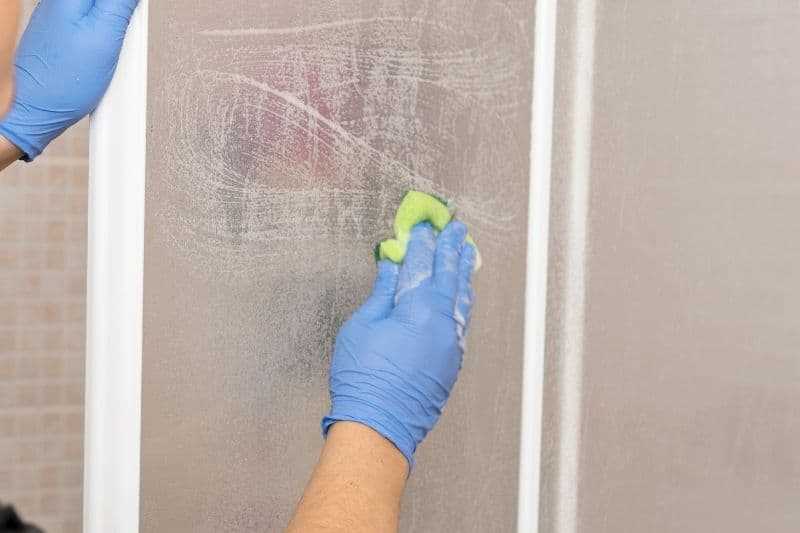
Limescale on glass can be unsightly and difficult to remove. It can leave a cloudy or hazy appearance on the glass, making it look dirty and dull. Over time, limescale buildup can also damage the glass surface, making it more prone to scratching and corrosion.
Preventing Limescale on Glass
While it may be difficult to completely prevent limescale from forming on glass, there are some measures you can take to minimize its buildup. These include:
- Using a water softener: Installing a water softener can help reduce the mineral content in your water, making it less likely to form limescale.
- Wiping down glass surfaces regularly: Wiping down glass surfaces after each use can help prevent water from evaporating and leaving behind minerals.
- Using vinegar or lemon juice: Applying vinegar or lemon juice to glass surfaces can help dissolve limescale and prevent its buildup.
Conclusion
Limescale is a common problem on glass surfaces, but understanding its causes and effects can help you effectively remove and prevent its buildup. By taking preventive measures and using the right cleaning methods, you can keep your glass surfaces looking clean and shiny.
Importance of Removing Limescale

Limescale is a common problem that occurs when hard water deposits minerals onto various surfaces, including glass. Removing limescale from glass is not just about maintaining its appearance, but it also serves several important purposes:
Prevents Damage

Limescale buildup can be damaging to glass over time. The minerals in hard water, such as calcium and magnesium, can etch into the surface of the glass, leading to scratches and permanent damage. By removing limescale regularly, you can prevent this deterioration and extend the lifespan of your glass.
Improves Transparency
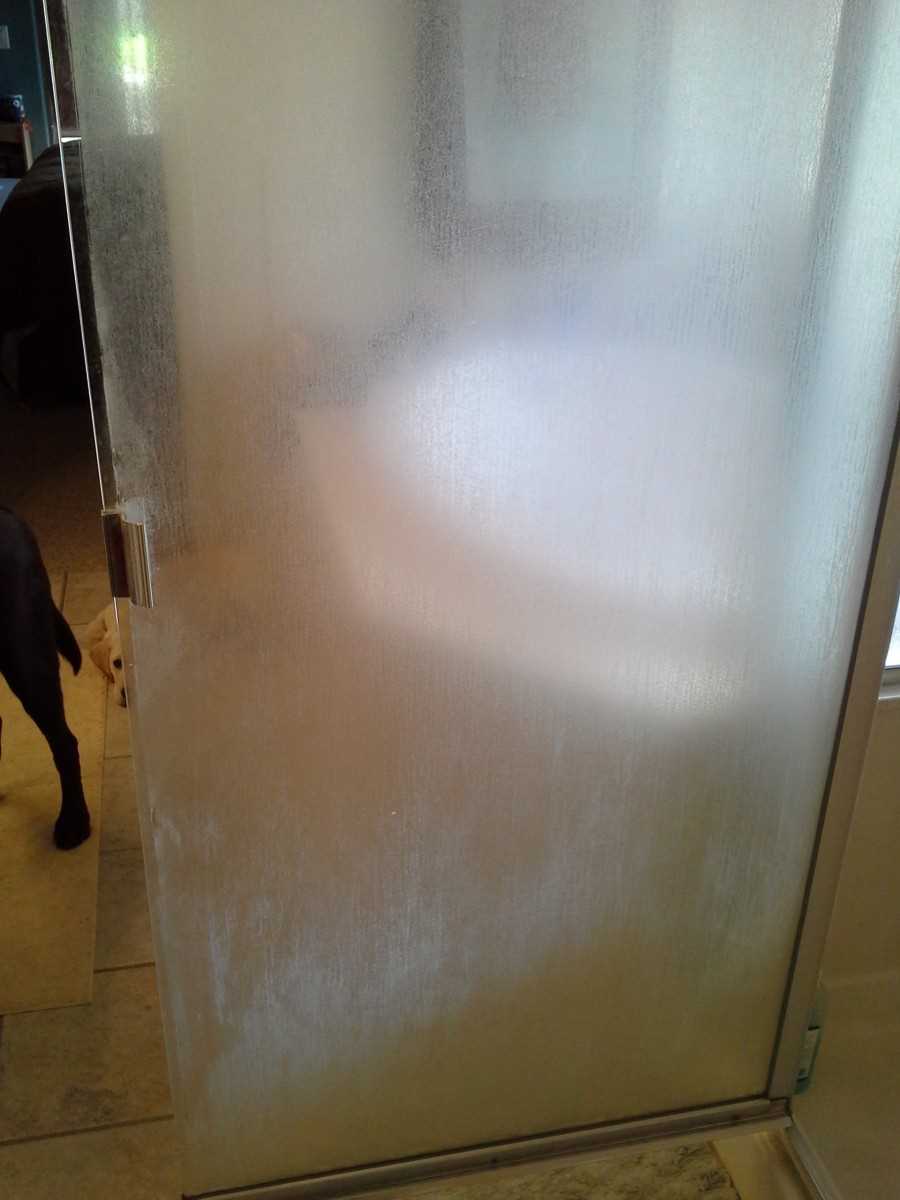
Limescale on glass can create a cloudy or hazy appearance, making it difficult to see through clearly. This can be especially problematic for shower enclosures, windows, and other glass surfaces that need to be transparent. Removing limescale not only enhances the visual clarity but also allows more light to pass through, brightening up your space.
Maintains Hygiene

One of the main concerns with limescale is that it provides a breeding ground for bacteria and other microorganisms. The porous nature of limescale can trap dirt, organic matter, and even harmful pathogens, posing a risk to your health. Regular removal of limescale on glass surfaces helps to maintain cleanliness and hygiene, ensuring a healthy living environment.
Preserves Aesthetics
Limescale stains on glass can ruin the aesthetic appeal of your surroundings. Whether it’s a bathroom, kitchen, or any other area with glass fixtures, removing limescale is essential to preserve the beauty and overall appearance. Clean and clear glass adds to the overall visual appeal of a space and creates a more inviting atmosphere.
Prevents Hard Water Stains

When limescale is not removed promptly, it can lead to the formation of stubborn hard water stains on glass. These stains are not only unsightly but can be difficult to remove. Regularly removing limescale prevents these stains from setting in and saves you time and effort in the long run.
In conclusion, removing limescale from glass is crucial for maintaining its integrity, transparency, hygiene, aesthetics, and preventing further damage. By incorporating effective limescale removal methods into your cleaning routine, you can ensure the longevity and visual appeal of your glass surfaces.
Methods to Remove Limescale
Vinegar
Step 1: Fill a spray bottle with white vinegar.
Step 2: Spray the limescale area generously with vinegar.
Step 3: Let the vinegar sit for 10-15 minutes, allowing it to break down the limescale.
Step 4: Scrub the limescale with a scrub brush or sponge, applying pressure to remove the buildup.
Step 5: Rinse the glass thoroughly with water, ensuring all vinegar residue is removed.
Step 6: Dry the glass with a clean, lint-free cloth.
Lemon Juice
Step 1: Squeeze fresh lemon juice into a small bowl or container.
Step 2: Apply the lemon juice directly onto the limescale, ensuring full coverage.
Step 3: Let the lemon juice sit for 15-20 minutes, allowing it to penetrate the limescale.
Step 4: Gently scrub the limescale with a scrub brush or sponge to loosen the buildup.
Step 5: Rinse the glass thoroughly with water to remove any remaining lemon juice.
Step 6: Dry the glass with a clean, lint-free cloth.
Baking Soda Paste
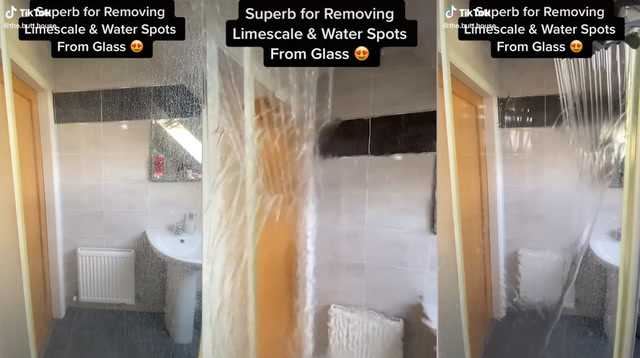
Step 1: Mix baking soda with a small amount of water to create a thick paste.
Step 2: Apply the baking soda paste directly onto the limescale, covering the entire area.
Step 3: Let the paste sit on the limescale for 30 minutes to an hour.
Step 4: Scrub the limescale with a scrub brush or sponge, using gentle circular motions.
Step 5: Rinse the glass thoroughly with water, removing all traces of the baking soda paste.
Step 6: Dry the glass with a clean, lint-free cloth.
Specialized Limescale Removers
Step 1: Choose a specialized limescale remover suitable for glass surfaces.
Step 2: Follow the instructions provided on the limescale remover bottle.
Step 3: Apply the limescale remover to the affected areas, ensuring even coverage.
Step 4: Let the limescale remover sit for the recommended amount of time.
Step 5: Scrub the limescale with a scrub brush or sponge, following the product manufacturer’s instructions.
Step 6: Rinse the glass thoroughly with water, removing any residue from the limescale remover.
Step 7: Dry the glass with a clean, lint-free cloth.
Prevention
Step 1: Wipe down glass surfaces regularly to remove any water residue.
Step 2: Use a squeegee after every shower or bath to remove excess water from the glass.
Step 3: Consider applying a limescale prevention treatment to the glass surface to discourage buildup.
Step 4: Use distilled or filtered water instead of hard water to reduce limescale formation.
Step 5: Clean glass surfaces regularly to remove any early signs of limescale.
Vinegar and Water Solution
A vinegar and water solution is a popular and effective method for removing limescale from glass. Vinegar, specifically white distilled vinegar, is known for its acidic properties that help dissolve limescale deposits. Here is a step-by-step guide on how to use a vinegar and water solution to remove limescale from glass:
- Mix the Solution: In a spray bottle, combine equal parts of white distilled vinegar and water. Shake the bottle to ensure the vinegar and water are well-mixed.
- Spray the Glass: Spray the vinegar and water solution onto the glass surface with limescale deposits. Make sure to cover the entire affected area.
- Let it Sit: Allow the vinegar and water solution to sit on the glass for about 10-15 minutes. This will give the vinegar enough time to break down the limescale.
- Scrub the Glass: After the solution has had time to work, use a non-abrasive sponge or cloth to scrub the glass surface. Apply gentle pressure and scrub in circular motions to remove the limescale.
- Rinse Thoroughly: Once you have scrubbed the glass, rinse it thoroughly with clean water. This will remove any leftover vinegar and limescale residue.
- Dry the Glass: Finally, use a clean, lint-free cloth to dry the glass surface. This will prevent any water spots or streaks from forming.
Repeat these steps if necessary to completely remove the limescale from the glass. Vinegar is a safe and natural solution, but be cautious when using it on delicate glass surfaces as it may etch or damage certain types of glass. Always test the solution on a small, inconspicuous area before applying it to the entire surface.
Lemon Juice and Baking Soda Paste
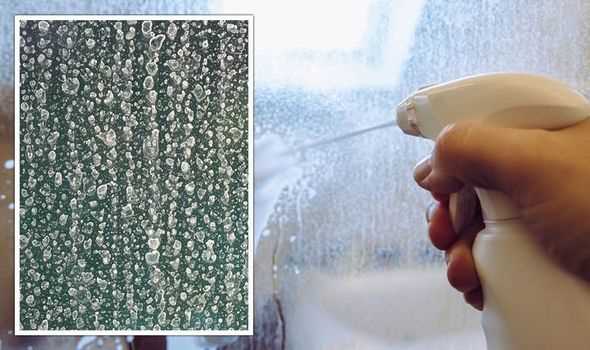
One effective method to remove limescale from glass is by using a paste made with lemon juice and baking soda. This natural and eco-friendly solution can help to dissolve and remove stubborn limescale deposits.
Materials Needed:
- 1 lemon
- Baking soda
- Bowl or container
- Spoon or fork
- Microfiber cloth or sponge
Instructions:
- Cut the lemon in half.
- Squeeze the lemon juice into a bowl or container.
- Add baking soda to the lemon juice gradually, stirring with a spoon or fork, until you get a thick paste.
- Apply the paste to the glass surface affected by limescale. Use a sponge or cloth to spread it evenly.
- Leave the paste on the glass for about 10-15 minutes, allowing it to penetrate and dissolve the limescale.
- Gently scrub the glass using a sponge or cloth, focusing on the areas with limescale deposits.
- Rinse the glass thoroughly with water to remove any remaining paste and limescale residue.
- Dry the glass with a clean microfiber cloth to prevent water spots.
Note: Lemon juice can be acidic, so it is important to do a small patch test on the glass surface before applying the paste to ensure that it does not cause any discoloration or damage.
Remember to wear gloves and protect your eyes when using any cleaning solutions, including natural ones.
Benefits of Lemon Juice and Baking Soda Paste:
Using lemon juice and baking soda paste has several advantages:
- It is an eco-friendly and natural alternative to chemical-based limescale removers.
- The citric acid in lemon juice helps to dissolve limescale deposits effectively.
- Baking soda acts as a mild abrasive and helps to remove stubborn limescale stains.
- It is safe to use on glass surfaces without causing damage or scratches.
- Both lemon juice and baking soda have antibacterial properties, which can help in cleaning and sanitizing the glass.
Overall, the lemon juice and baking soda paste is a simple and effective method to remove limescale from glass surfaces while being gentle on the environment.
Commercial Limescale Removers
Commercial limescale removers are a convenient and effective option for removing limescale from glass. These products are specifically designed to break down and dissolve the mineral deposits, making it easier to remove them.
Benefits of using commercial limescale removers:
- Quick and easy solution
- Economical
- Efficient in removing limescale build-up
- Safe for use on glass surfaces
- Some removers also offer additional cleaning properties
How to use commercial limescale removers:
- Read and follow the instructions on the product label carefully.
- Ensure proper ventilation in the area where the product will be used.
- Apply the limescale remover to the affected glass surface.
- Leave the product on for the recommended amount of time as stated on the label.
- Using a non-abrasive cloth or sponge, scrub the glass surface in a circular motion to remove the limescale.
- Rinse the glass surface thoroughly with clean water to remove any residue.
- Dry the glass surface using a soft, lint-free cloth.
Note:
It is important to choose a commercial limescale remover that is suitable for use on glass surfaces. Always test the product on a small, inconspicuous area of the glass before applying it to the entire surface.
| Product | Features |
|---|---|
| Lime-A-Way |
|
| CLR Calcium, Lime & Rust Remover |
|
| Scrubbing Bubbles Mega Shower Foamer |
|
Remember to always follow the safety instructions and use protective gloves when handling commercial limescale removers. With the right product and proper application, you can effectively remove limescale from your glass surfaces and restore their shine and clarity.
Preventing Limescale Buildup
- Regular Cleaning: The most effective way to prevent limescale buildup on glass is to clean it regularly. By routinely wiping down your glass surfaces with a mild detergent or glass cleaner, you can remove any minerals that may be present in the water and prevent limescale from forming.
- Use a Water Softener: Installing a water softening system in your home can greatly reduce the amount of limescale buildup. Water softeners work by removing minerals such as calcium and magnesium from the water, preventing them from depositing on your glass surfaces.
- Remove Standing Water: Limescale often occurs in areas where water is allowed to pool and evaporate. To prevent this, make sure to wipe down your glass surfaces after each use and address any areas where water tends to collect, such as in corners or along the bottom of shower doors.
- Use Vinegar: Vinegar is a natural and effective way to remove limescale. You can prevent limescale buildup by periodically cleaning your glass surfaces with a mixture of equal parts vinegar and water. Simply spray the solution onto the glass, let it sit for a few minutes, and then wipe it away with a soft cloth or sponge.
- Sealant: Applying a sealant or glass protector to your glass surfaces can help prevent limescale from adhering to the glass. These products create a barrier that repels water, making it more difficult for limescale to form and stick to the glass surface.
- Avoid Abrasive Cleaners: When cleaning your glass surfaces, avoid using abrasive cleaners or tools such as scrub brushes or steel wool. These can scratch the glass and create tiny grooves where limescale can accumulate.
- Regular Maintenance: In addition to regular cleaning, it’s important to inspect your glass surfaces periodically for any signs of limescale buildup. If you notice any deposits, address them promptly to prevent further accumulation.
FAQ
What is limescale and how does it form on glass?
Limescale is a hard, chalky deposit that forms when hard water evaporates, leaving behind a residue of minerals such as calcium and magnesium carbonate. When hard water is left on glass surfaces and evaporates, it can leave behind limescale stains.
What are some common methods to remove limescale from glass?
There are several effective methods to remove limescale from glass. Some common methods include using vinegar, lemon juice, baking soda, commercial limescale removers, or a mixture of water and citric acid. Each method has its own advantages and effectiveness.
How do I use vinegar to remove limescale from glass?
To use vinegar to remove limescale from glass, you can either spray the vinegar directly onto the limescale stains and let it sit for a few minutes before scrubbing with a sponge or cloth, or you can soak the glass in a mixture of vinegar and water for a longer period of time. Afterwards, rinse the glass thoroughly with water to remove any vinegar residue.
Can I use lemon juice to remove limescale from glass?
Yes, lemon juice is acidic and can be effective in removing limescale from glass. Similar to vinegar, you can either apply lemon juice directly onto the limescale stains and scrub with a sponge or cloth, or soak the glass in a mixture of lemon juice and water. Afterward, rinse the glass thoroughly to remove any lemon juice residue.
Are there any commercial limescale removers available?
Yes, there are many commercial limescale removers available on the market. These products are specifically designed to remove tough limescale stains and may be more powerful than homemade remedies. It is important to follow the instructions on the product carefully and use gloves and eye protection when handling commercial limescale removers.













